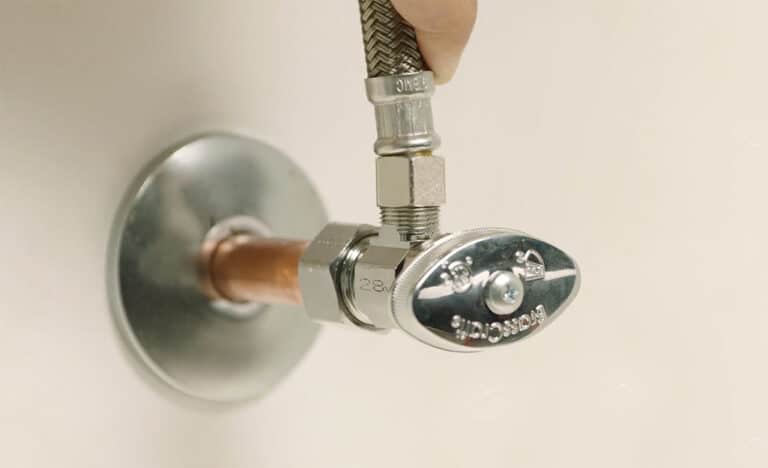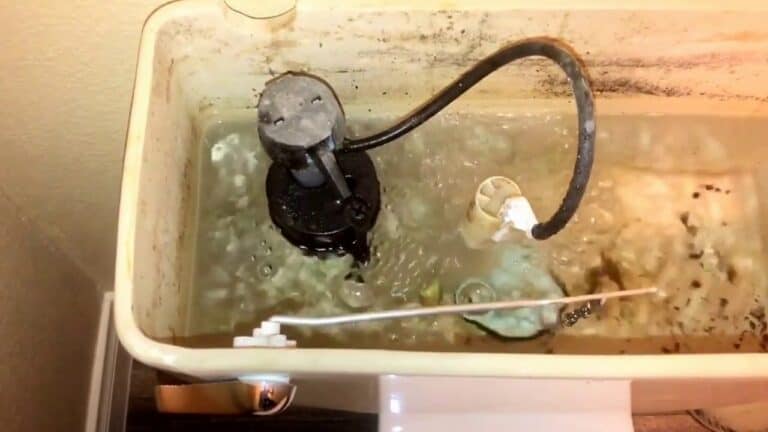How Many Types of Toilet Flush Systems are There?

When you are trying to choose a new toilet for your new or renovated bathroom, the choices can be quite overwhelming. No one wants to choose a toilet and find out later that they could’ve chosen more wisely. How many types of toilet flush systems are there? Let’s take a look at the 10 types of toilet flush systems you’re likely to come across while on your search.
The Gravity Washdown Toilet System Is the Most Common Toilet Flush System
When toilets were first invented, they employed the gravity flush system. Still the most commonly used type of toilet flush system, the gravity flush system uses the force of gravity upon the water to empty the waste out of the toilet. Generally, the water tank is situated above the toilet and behind the toilet seat.
When the toilet is flushed, the water’s weight, as it is released down from the tank into the toilet, creates the pressure the toilet needs to flush the waste. The water refills the tank until a mechanism inside indicates it’s full, and it’s ready for next time.
The gravity flush system’s design is simplistic, so it’s the easiest to repair when things go wrong. Plus, it’s quieter than other systems, and it’s inexpensive.
The Siphonic Toilet Flush System Is Very Common In the United States
The siphonic toilet flush system uses a long, narrow S or P-shaped trapway where one end is an inlet into the bowl and the other, a drain pipe underneath the bowl. When you press the flush lever or button, a siphon is created, the flush valve opens, and the water flows from the tank to the bowl.
With a siphonic toilet, the water level will rise in the bowl and then suddenly disappear into the outlet. There is more water coming into the bowl than going out, and as the water goes out of the trapway, the displaced air forms a vacuum. After it crosses the kink in the trapway, siphoning starts.
The Pressure-Assisted Toilet Flush System Is Less Apt to Clog Up
The pressure-assisted toilet flush system pairs the dynamics of the gravity washdown toilet system with compressed air. There are two types of pressure-assisted toilet flush systems: positive pressure-assisted and negative pressure-assisted toilet flush systems.
The Positive Pressure-Assisted Toilet Flush System Thoroughly Uses Less Water Than Gravity Washdown Toilets
The positive pressure-assisted toilet flush system looks a little different inside the ceramic tank. In there, you’ll find a plastic cistern full of air. After the toilet is flushed, as the tank refills with water, the air inside the cistern is compressed. Upon the next flush, the compressed air forcefully ejects the water into the toilet bowl, still using less water than a gravity washdown toilet.
The Negative Pressure-Assisted Toilet Flush System Uses Less Than a Gallon of Water Per Flush
The negative pressure-assisted toilet flush system also has a plastic cistern full of air, but in this type, the cistern is connected via an air passage to the rear of the toilet’s trapway. After flushing, as the tank refills with water, compressed air is pushed into the trapway. It places pressure on the water both in the trap and in the bowl, which raises the bowl’s water level a bit.
When you flush, and gravity pulls the water out of the tank into the bowl, it also pulls behind it the air from the trapway, which creates suction in the trapway. The result is a toilet that flushes using less than a gallon of water (as little as 0.8 gallons).
Because of the force behind the water, pressure-assisted toilet flush systems usually clean the bowl better than gravity washdown toilets, and they are less likely to clog. However, they are noisier, more difficult to repair, and more expensive.
The Vacuum-Assisted Toilet Flush System Is Easily Repaired
Vacuum-assisted toilet flush systems work via a vacuum tank that’s connected to the trapway. The water flowing after the flush lever is used creates suction in the vacuum tank, and that suction pulls waste from the bowl. Vacuum-assisted toilet flush systems are some of the latest bathroom innovations.
Vacuum-assisted toilets have a powerful flush, and they’re easy to fix. However, they are more costly than gravity flush toilets.
The Double-Cyclone Toilet Flush System Powerfully Cleans
Fairly new to the market is the double-cyclone toilet flush system designed and manufactured by Toto. When you flush a double-cyclone toilet, it works using some dynamics of a gravity toilet flush system but adds a propulsion method that shoots the water into the toilet bowl through two nozzles, which are strategically placed on either side of the inside top of the bowl facing sideways.
This fast-moving water spins in the toilet somewhat similar to the motion of a cyclone. Double-cyclone toilets effectively flush waste away and rinse the toilet well using just over 1.25 gallons of water per flush. Toto’s design is simple, but replacement parts can be hard to find.
The Tornado Toilet Flush System Harbors Fewer Germs
Even newer than the double-cyclone toilet flush system is the tornado toilet flush system. With the tornado toilet, Toto improved on their double-cyclone design by using three jets instead of two, still strategically placed sideways spread around the top of the bowl. The tornado toilet flush system moves water more aggressively than its predecessor, thus its name – the tornado.
Lack of a rim gets the tornado toilet an A+ in the battle against germs. The forceful flush cleans and rinses the bowl well and the flush is relatively quiet, but replacement parts may be difficult to find.
The Tower-Style Toilet Flush System Is Efficient
The tower-style toilet flush system has a canister toilet flapper that’s usually mounted in the tank’s center, and it’s connected to the flush lever. Used almost exclusively by Kohler, the system, though it uses a flapper, is not like a traditional flapper toilet flush system. The tower-style stopper lifts off entirely, letting the water flow into the bowl from every side (360°).
In these tower-style toilets, the pressure of water entering is greater than the pressure of the water exiting by a ratio of 3:2. This technology allows faster water flow and thus a much better flush. These toilets normally last a long time and they’re low maintenance. However, they are not cheap and their moving parts are unique and a bit complicated. There may be problems when it comes time to repair them.
Double-Vortex Flush System Effectively Rinses the Bowl
The double-vortex toilet flush system is similar to the double-cyclone used by Kohler, but it’s a little different and it’s manufactured by American Standard. With the double-vortex toilet, just like the double-cyclone, water goes into the bowl through 2 nozzles situated sideways on either side of the top of the bowl. This process creates a whirlpool.
What makes the double-vortex unique is that the water doesn’t just come from the two nozzles. As the nozzles are rushing water into the bowl, more water is sent directly into the trapway. Double-vortex toilets effectively flush waste away and rinse toilets.
The Rear Discharge or Back Outlet Toilet Flush System Is Quiet
A rear discharge or back outlet toilet flush system is like a traditional bottom-flush toilet. However, instead of the waste being flushed down through the floor into the sewage system, the waste is flushed horizontally out of the back of the toilet bowl into a pipe that carries it to the sewage system.
The Upflush or Macerating Toilet Flush System Is Visually Appealing
The upflush or macerating toilet flushing system features a macerating chamber. Solid human waste and toilet paper are sent to this chamber behind the toilet where it is ground up, shredded, mixed with flushing water, and sent to the sewer via a small pipe powered by a quiet electric pump.
This type of toilet flush system is ideal for small or difficult spaces, like basements, as it can be installed almost anywhere. Upflush toilets tend to be more pleasing to the eye than the average toilet, as the normal moving parts are not in view. They were created to fill the need for toilets where plumbing would be an issue.
With the upflush toilet, there’s no need for a plumber to tear up your floors and walls. Upflush toilets also have a powerful flush. They do require regular maintenance and sometimes need to be adjusted.
What’s the Difference Between a Single-Flush Toilet Flush System and a Dual-Flush Toilet Flush System?
The difference between a single-flush toilet flush system and a dual-flush toilet flush system is that a single-flush system uses the same amount of water each time you press the lever. No matter what type of waste is in the toilet bowl. In older homes and businesses, you’ll usually find combination single-flush gravity washdown toilet flush systems. These systems are easy to operate and repair.
Dual-flush toilet flush systems are becoming more popular. Unlike single-flush toilets, dual-flush toilets offer you a choice of how much water you want to use. The idea is that if you only have liquid waste, you can do a partial flush that uses less water. If you have solid waste, as well, you can choose to do a full flush. In other words, there are two buttons.
The full flush uses 1.6 gallons of water and the partial flush, only 1.1 gallons. Some countries have come to require the installation of dual-flush toilets in new constructions because they are such water-savers. These models are great for the environment and can save you money. However, they require cleaning more often and the repairs are more costly.
What’s the Difference Between a Low-Flow Single-Flush Toilet and a High-Efficiency Toilet?
A standard toilet once used up to 7 gallons of water to flush. Then, years later, there were models available that used only 3.5 gallons per flush. Let’s look at some options available to consumers today — low-flow single-flush, dual-flush and high-efficiency toilet flush systems.
A low-flow single-flush toilet uses 1.6 gallons to flush. That is what a dual-flush toilet uses to flush solid waste. When there is no solid waste, it uses a mere 1.1 gallons. A high-efficiency toilet uses as little as 1.28 gallons per flush.
You can also read:






